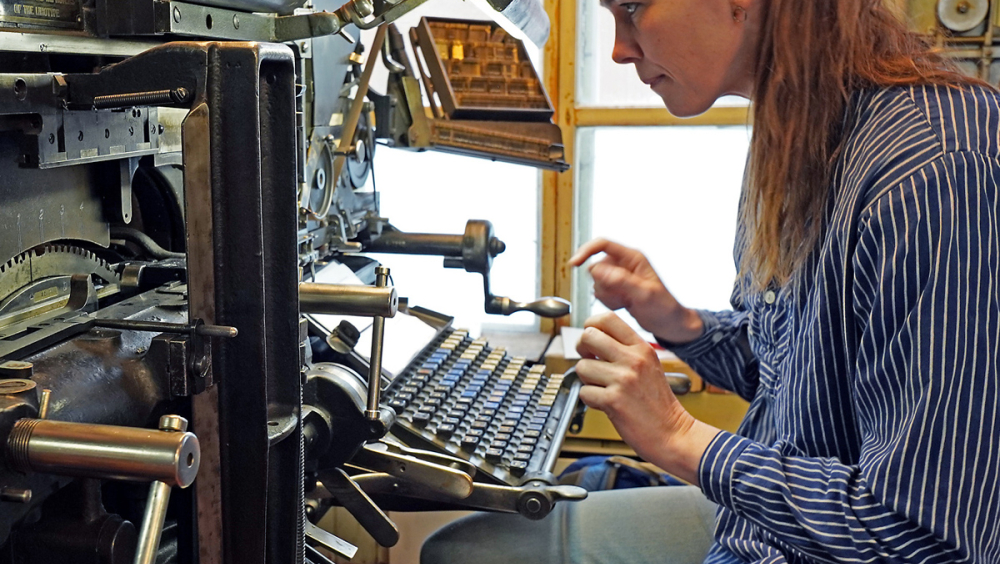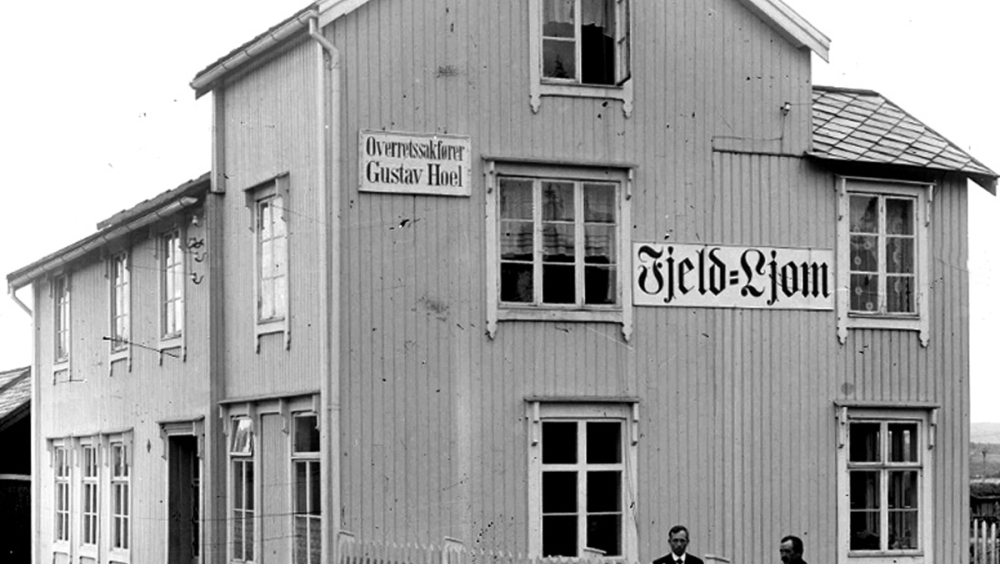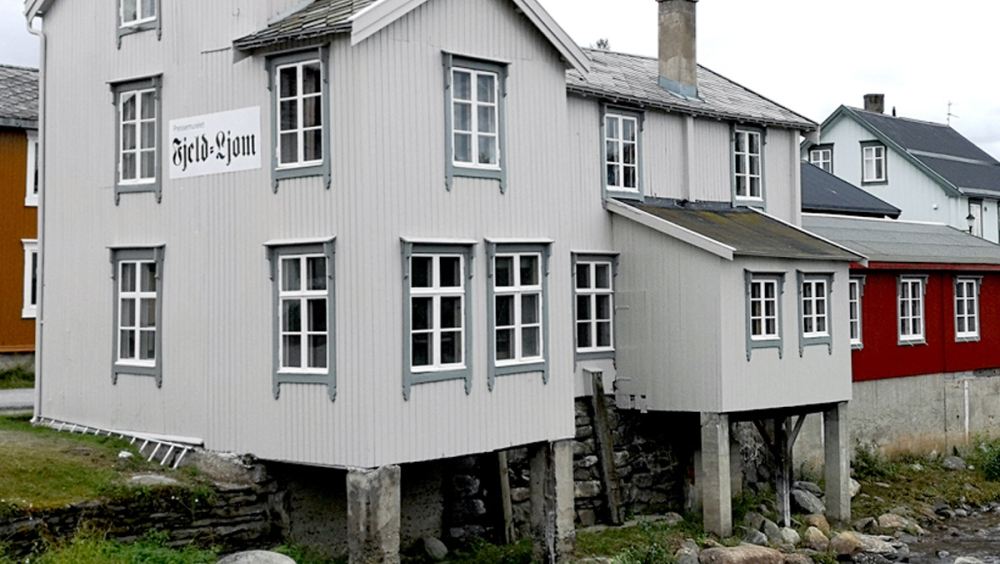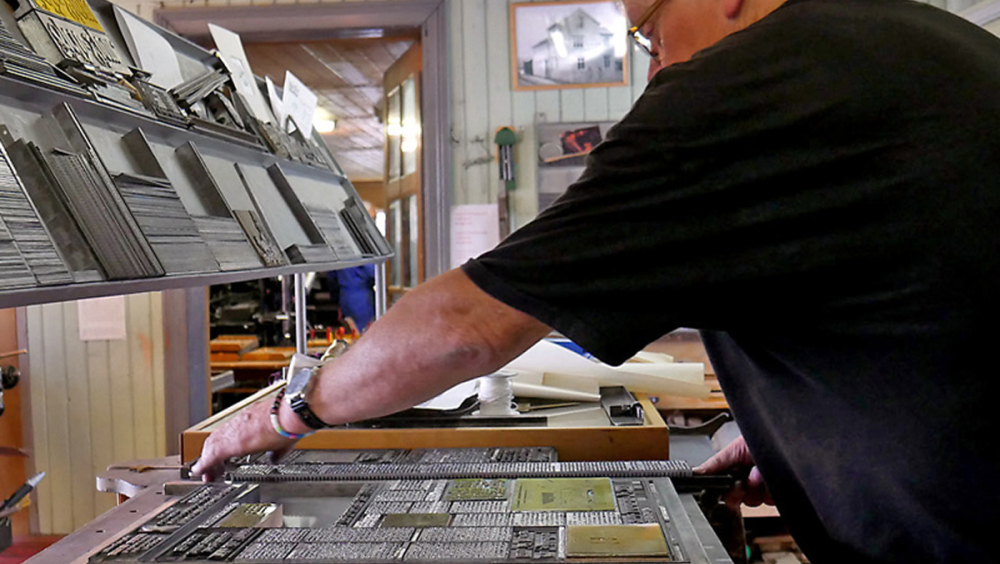The predigital newspaper and printing house
Country
Norway
Organization name
Pressemuseet Fjeld-Ljoms Venner
Storyteller
Jan Erik
E-Mail: jan.erik@pressit.no
Overview
In 1891 the newspaper man Olaf O. Berg bought a building located close to the river running through Røros, Norway. The newspaper “Fjeld-Ljom” was produced and published from this very same house until 1975.
When the newspaper moved out of the building, the old printing equipment was left untouched. Several people from around the country with interest in newspaper and printing history worked eagerly to secure the old newspaper house as a museum, which they succeeded in 1986. The intact production system is pretty much the same as it was during the last period of lead-based production of three editions a week, and is now used to produce a yearly museum edition of “Fjeld-Ljom”.
The Press Museum “Fjeld-Ljom” is a unique newspaper house with a complete working lead-based production line, located in the historical copper mining town of Røros, one of the UNESCO World Heritage sites in Norway.
The association of Friends of Press Museum Fjeld-Ljom work on several levels in securing this important European heritage:
- Recruiting and training of new volunteers, making them capable of maintaining and running the lead-based production equipment.
- Cooperation with Kunsthøgskolen i Oslo (Oslo National Academy of the Arts) in finding new ways of using old letterpress equipment in modern art expressions.
- Regular open days when the public can come and see newspaper production the old way.
- Special sessions for schools, with focus on freedom of speech and freedom of press – comparing our present time with the years before Internet and social medias.
In the year 1868 Andreas Halvorsen came walking into the mining town Røros, situated in the eastern part of Norway. This might have been one early spring day, when the winter still kept the mountain plateau in its cold grip, and the sulphur smoke from the copper melting house, as always, gave a distinct smell to the frosty air in the narrow streets between the dark wooden houses.
As the governmental rules stated at that time, Halvorsen had been given a royal permission to start a small printing company in Røros. He was already an experienced craftsman. When Halvorsen started the new printery, the main bulk of the work was for the mining company, official services and for private people. But already the same year, on the 6th of August, he launched his own newspaper, “Fjeldposten”, (“The Mountain Post”), the very first newspaper in Røros.
In 1886 Olaf O. Berg started the newspaper “Fjeld-Ljom”. The name was from a poem and can be translated into something like “The distinct Sound of the Mountain”. In 1929, the name was changed to the more linguistic and modern “Fjell-Ljom”. With Berg we can sense the beginning of a modern newspaper history in Røros. It leads up to what still is visible in the same house that Berg bought in 1891, now named “Pressemuseet Fjeld-Ljom” (“The Press Museum”).
During the first years of the 20th century, Røros had a rich newspaper history, with at the most five different publications. Among the newspaper publishers were also editors who were driving forces in developing the local society. This was a time with a lot of changes. Electricity became common, the railway brought goods to and from the area, and even tourists started to show up. The right to vote for all, including women, was given in 1913. All this led to growing interest in newspaper reading.
By the end of the First World War three newspapers were solidly established in Røros. “Fjell-Ljom”, still a bit radical, the conservative “Dovre” and the new social democratic newspaper, given the name “Arbeidets Rett” (“Right to Work”).
Arbeidets Rett is still published three times a week in Røros, while “Fjell-Ljom” has become a weekly publication. Both Røros newspapers have developed into the modern age, with an online newspaper that is updated on a daily basis.
When new production techniques replaced the printing machine and the old typesetting machines, the old equipment in the newspaper house of “Fjell-Ljom” was luckily, and more or less by coincidence, left untouched.
During the late 1970’s and the 1980’s, people with interest in newspaper and printing history worked to secure the old newspaper house as a newspaper museum. This came into a reality in 1986. In 1991, volunteer friends of the museum established an association, that took on the responsibility of keeping the house as a living museum. The intact production system in the newspaper is pretty much the same as it was during the last period of lead-based production of three editions a week up until 1975.
Three times a year a group of volunteer workers from all over the country meet in Røros to maintain the equipment and produce text, titles and pictures for the yearly museum newspaper.
The museum volunteers are also working with bringing the newspaper house back to its origin. We want to re-establish the editorial and commercial offices, with typewriters, analogue cameras and darkroom facilities, as they were up until 1975, when the editorial staff left the house.
The museum in the old building has taken the old name, “Fjeld-Ljom”, to show the connection and clarify the difference between the still existing and modern newspaper Fjell-ljom – and the museum, preserving the media heritage.
One important part of the work performed by the museum friend’s association, is to maintain the old machinery, keeping it in working order for production of the yearly museum newspaper, and to be able to show the public how newspapers were produced in the old days. Since lead-based production went out of fashion in the 1970’s, workers mastering the old techniques are getting older and fewer. With that in mind we are constantly trying to catch interest among younger people, to learn the skills of maintaining and handling the machines. As the one and only intact newspaper house of its kind in the Nordic countries, we look upon this as a mission of securing valuable European heritage.
Our optimism in securing the common heritage is also related to the fact that we see a growing interest for old printing techniques among younger people. At Oslo National Academy of the Arts, PhD in Graphic Art, Ane Thon Knutsen, gives inspiration from our Press Museum to her students. The same with teacher Marit Brandsnes at “Arbeiderbevegelsens Folkehøyskole (” People’s college”), where she teaches in graphic design, using letterpress techniques to show history and basics of typography and printing.
The friend’s association of the Press Museum is also participating in joint European work to train technicians being able to help owners of this kind of equipment all over the continent. Especially the line casting machines, Linotype and Intertype, produced from the 1880’s and on to the 1970’s, are complex machinery, no longer in ordinary use.
We also bring on the history of newspapers and freedom of speech to younger generations. Together with the local primary school, we have started, and plan to develop further, organised visits in our newspaper house. The generations of today will in our newspaper house experience how demanding it was to take part in public discussions when reader’s letters in newspapers were more or less the only channel for exchanging points of view.
The history of newspapers and printing in the years before we all turned digital and the net became familiar to most of us, is important, to be able to understand how our democracy has developed and how it works today.
The Friend’s association of the Press Museum Fjeld-Ljom see this as important parts of our long-term mission.
European Dimension
The printing technology still working in our Press Museum was common all over Europe through the 20th century. Fjeld-Ljom is one of very few, if not the only original newspaper building in Europe with a complete working lead-based production line, from editor, through type setting, page make-up and on to the printing machine, with the broadsheet newspaper as printed evidence of the machinery working.
Maintenance of the equipment is done by volunteers. To ensure the museum’s future we are in need of more volunteers, being willing to use of their time learning to keep up the maintenance of the old machinery.
Through our membership in Association of European Printing Museums, we have proposed to establish organised cooperation throughout Europe in maintaining linecasting machines. See our article: https://www.aepm.eu/news/meeting-the-need-for-skilled-typesetter-technicians/
The mining town of Røros is one of the UNESCO World Heritage sites in Norway. The Press Museum is very much a part of the town’s cultural and labour heritage.
Many artists work across the European borders. So also at Oslo National Academy of the Arts, where students not only from Norway get their education. We contribute with knowledge about – and training in old letterpress techniques.
We work with a heritage that was common in use all over Europe. Swift changes in printing technologies, new digital tools and growth of the net, rapidly changed the situation. This happened at the same time all over Europe, and the friend’s association of the Press Museum “Fjeld-Ljom” tries to take responsibility in preserving this important part of our common history.



